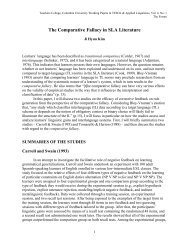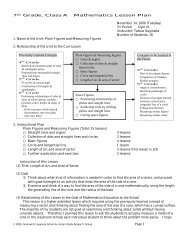UNICEF Mongolia - Teachers College Columbia University
UNICEF Mongolia - Teachers College Columbia University
UNICEF Mongolia - Teachers College Columbia University
You also want an ePaper? Increase the reach of your titles
YUMPU automatically turns print PDFs into web optimized ePapers that Google loves.
have a large number of teachers who rely on addional hours in other subjects in order to aain a full<br />
teaching load and a full salary.<br />
RECRUITMENT INTO TEACHING<br />
Fiy-three percent of teacher educaon students study at MSUE in Ulaanbaatar or Arkhangai. This study<br />
therefore focused on an analysis of MSUE data and selected three departments that are very different<br />
from each other: the Department of Primary Teacher Educaon, the Department of Foreign Languages,<br />
and the Department of <strong>Mongolia</strong>n Language and Literature. The research team was able to reconstruct<br />
four of the five indicators for effecve recruitment into teaching: admission rate and criteria, enrollment<br />
rate, compleon rate, and university-to-work transion rate. The findings show that there was a surge<br />
in applicaons and enrollments in 2006/07 and 2007/08, when teachers’ salaries were significantly<br />
raised, and the demand for teachers had grown due to the expansion of general educaon from 10 to<br />
11, and later on, from 11 to 12 years. The average test scores also improved considerably in all three<br />
departments, and especially for applicants to the Department of Foreign Languages. In 2006/07, the<br />
average test score of applicants for the Department of Foreign Languages was 540 points; four years<br />
later, in 2010/11, the average was 710 points. The compleon rate was low in the Department of<br />
Foreign Languages; approximately 30 percent of students in that department either switched to other<br />
departments, interrupted their studies, failed the final exam, found employment before compleng their<br />
studies, or, for other reasons, did not finish their studies in the required period of four years. The biggest<br />
problem in <strong>Mongolia</strong> is the low university-to-work transion rate. Only approximately one-quarter of the<br />
graduates of pre-service teacher educaon programs actually end up working as teachers. In 2010/2011,<br />
only 1,171 teachers were newly hired. Yet, approximately 5,000 teacher educaon graduates were<br />
produced in that year and the majority of them were on the job market.<br />
IMPLEMENTATION OF THE 2007 SALARY REFORM AT THE SCHOOL LEVEL<br />
This study focused on five objecves of the reform and examined whether the following goals were<br />
accomplished at the school level: (1) a reducon of weekly teaching hours; (2) more predictable and<br />
transparent income; (3) a reducon of income inequalies between teachers in rural and urban schools;<br />
(4) full-me employment as a teacher; and (5) making the teaching profession more aracve and<br />
reputable. All five objecves of the reform can ulmately improve quality in educaon and therefore<br />
deserve closer aenon. It is assumed that instruconal quality improves significantly if teachers are<br />
able to teach fewer hours per week; only teach subjects for which they received training; enrely focus<br />
on their teaching rather than pursue mulple jobs; are movated in their work; and are highly regarded<br />
by others. Based on an evaluaon of how the reform has been implemented, the research team makes<br />
the following recommendaons:<br />
• The statutory teaching load in <strong>Mongolia</strong> is 646 hours per year (19 hours per week), but the<br />
actual average teaching load is 697 hours per year (20.4 hours per week). It is much lower than<br />
the OECD average of 779 hours (primary), 701 hours (lower secondary) and 656 hours (upper<br />
secondary). It is recommended to raise the statutory teaching from 19 to 20 hours per week<br />
and increase the base salary accordingly. In the long term, when the educaon system possibly<br />
moves from the two-shi to the one-shi system, the weekly instruconal hours should be<br />
raised even further.<br />
• The current salary is composed of six elements: base salary, addional hours, supplements for<br />
funcon, supplement for rank, bonuses for performance (three types of bonuses), and general<br />
1<br />
2<br />
3<br />
4<br />
5<br />
6<br />
TEACHERS IN MONGOLIA: AN EMPIRICAL STUDY ON RECRUITMENT INTO TEACHING,<br />
PROFESSIONAL DEVELOPMENT, AND RETENTION OF TEACHERS<br />
11



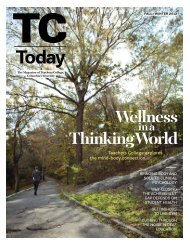

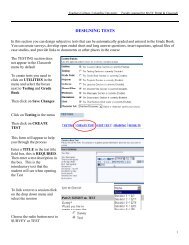


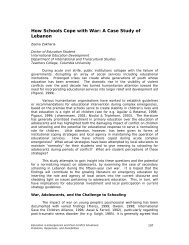
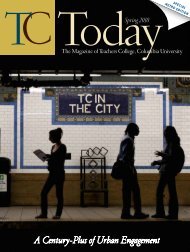




![TC Tod[...].pdf - Teachers College Columbia University](https://img.yumpu.com/27074883/1/190x252/tc-todpdf-teachers-college-columbia-university.jpg?quality=85)

